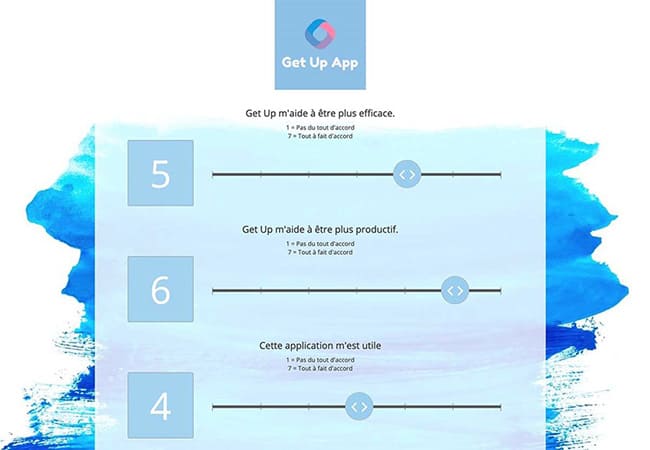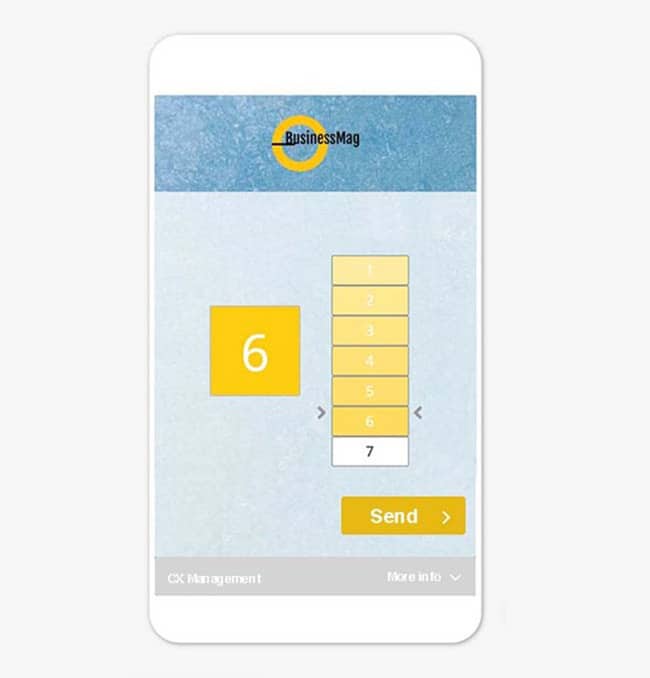There are many standardized tools and surveys that measure a product or digital service’s user experience: software, mobile app, website etc. The “USE survey” is one of them. This article outlines what the USE survey consists of, its uses, its structure and the different questions that make it up. If you’re publishing a product or...
There are many standardized tools and surveys that measure a product or digital service’s user experience: software, mobile app, website etc. The “USE survey” is one of them.
This article outlines what the USE survey consists of, its uses, its structure and the different questions that make it up. If you’re publishing a product or digital service and want to find out what your users think, this is the article for you.
A Survey that Measures Your Digital Product’s UX (Software, App etc.)
The USE survey is a standardized survey created to measure the user experience of a product or digital service: software, a digital platform, SaaS, mobile app, website etc.
USE is an acronym that refers to the main three aspects analyzed in this survey:

This survey questions users to get feedback on a product. Thanks to this survey, you can discover your product’s strengths and where it could be improved. The USE survey is a tool used in the ongoing improvement process.
The USE survey is one of the reference surveys used in evaluating user experience. But it’s not the only one. To discover other survey models, check out our summary of UX surveys.
The USE Survey Structure – 4 Sections, 30 Questions
The USE survey is made up of 30 questions organized into 4 sections:
- Usefulness: 8 questions to measure the usefulness of your digital product.
- Ease of Use: 10 questions to measure ease of use.
- Ease of Learning: 4 questions to measure the speed of your users’ learning curve.
- Satisfaction: 7 questions to measure your user’s satisfaction.
As such, the USE survey allows you to cover all aspects of a product or digital service’s usability. This leads to a very interesting UX survey. It can be distributed to beta testers before the commercialization of the product and throughout the user’s life cycle.
The questions are created as statements written in the first person. For each statement, the respondent must indicate how far they agree with the statement. The USE survey uses a 7 level Likert scale.
- The respondent that chooses “1” completely disagrees with the statement.
- The respondent that chooses “7” completely agrees with the statement.
Let’s find out which questions make up the USE survey.
8 Questions to Measure the Usefulness of Your Digital Product
Is your digital product useful for your users? Does it allow your users to address their challenges, needs and goals?
User experience must first be thought about through the prism of usefulness. It’s for this reason that USE survey creators chose to start with a series of question-statements centered around the usefulness of your product or digital service.
Here’s the list of question-statements:
- This helps me be more efficient.
- This helps me be more productive.
- This product is useful to me.
- This product gives me more control over my activities.
- This product makes it easier to complete my tasks.
- This product saves me time.
- This product meets my requirements.
- This product did everything I expected it to do.
- This helps me be more efficient.
- This helps me be more productive.
- This product is useful to me.
- This product gives me more control over my activities.
- This product makes it easier to complete my tasks.
- This product saves me time.
- This product meets my requirements.
- This product did everything I expected it to do.

The structure of the statements can, of course, be personalized. You can replace “this” and “the product” with the name of your product or the type of product you are offering. For example:
- Skeepers CX Management helps me be more efficient.
- The software helps me be more efficient.
Through the introduction of these 8 questions, we’ve voluntarily varied the way in which we word the statements. However, to stay consistent, we would recommend you find one structure that you stick to throughout the survey.
10 Questions to Measure Ease of Use
The first group of question-statements that we’ve reviewed allow you to evaluate how much a product can answer the needs and expectations of your users and customers. In the second section, you no longer need to evaluate the capacity of the software, but the simplicity of its use.
This is a very important aspect of UX. A software that can do this and that is essential, but it’s a must that you can do it easily, without difficulty and/or technical expertise. This is a frequent mistake we find in UX: thinking about aesthetics before practicality. The aim of UX is not to produce a beautiful interface, but to produce an ergonomic interface that will guide users through their activities and in reaching their goals.
The USE survey puts forward 10 question-statements to evaluate the ergonomics of your digital service. Comments concerning the wording of questions are equally valuable here and, for that matter, throughout the entire survey.
Here are the 10 statements that make up this section:
- It’s easy to use.
- It’s simple to use.
- It’s user-friendly.
- The number of steps needed to achieve what I want to do has been reduced to a minimum.
- It’s flexible.
- Its use doesn’t require any effort.
- I don’t need to read the instructions to use it.
- I didn’t encounter any inconsistencies while using it.
- The product is as useful for casual users as it is for regular users.
- I can correct mistakes quickly and easily.
- I can use it successfully every time.
- It’s easy to use.
- It’s simple to use.
- It’s user-friendly.
- The number of steps needed to achieve what I want to do has been reduced to a minimum.
- It’s flexible.
- Its use doesn’t require any effort.
- I don’t need to read the instructions to use it.
- I didn’t encounter any inconsistencies while using it.
- The product is as useful for casual users as it is for regular users.
- I can correct mistakes quickly and easily.
- I can use it successfully every time.
4 Questions to Measure the Learning Curve
Ease of learning is another interesting aspect to measure. An entire section of the USE survey is dedicated to this.
Here are 4 suggested statements:
- I learned how to use the product quickly.
- I easily memorized the function of the product.
- It’s easy to learn how to use the product.
- I quickly mastered the software.
- I learned how to use the product quickly.
- I easily memorized the function of the product.
- It’s easy to learn how to use the product.
- I quickly mastered the software.
7 Questions to Measure User Satisfaction
In this last block of statements, you need to measure your user satisfaction. Here we’re interested in the user’s general judgement of the product and how they feel about it. This closing section of the USE survey is, therefore, set apart from the previous sections.
The first three sections analyze the most objective aspects. Whether a user manages to easily use the software or struggles to understand how it works are objective facts and are not subjective feelings. On the contrary, when we ask users whether they are satisfied with the product, we look to their subjective opinion.
It’s completely logical that the “satisfaction” section comes last since these elements are evaluated in the first three sections, which form and explain the user’s subjective feelings. A product that’s useful, easy to use and with a quick learning curve leads to the user feeling satisfied.
The final section is dedicated to user satisfaction and comprises these 7 statements:
- I’m satisfied with the product.
- I’m going to recommend the product to a friend.
- It’s fun to use.
- The product works like I want it to work.
- It’s a wonderful product.
- I think I need this product.
It’s pleasant to use.

Evaluating the Positive and Negative Aspects of the Product
The USE survey is original: after the four thematic sections, the respondent is invited to list the main negative and positive aspects of the product without a response scale. There are no predetermined answers either. If the respondent wants to, they are invited to share their opinion on the strengths and weaknesses of the product. They can give up to 3 negative points and 3 positive points.
To conclude, it’s worth noting that the USE survey is used by thousands of businesses across the world and has a proven track record. But it’s not the only available UX survey. To discover more information about surveys, we recommend that you read our Skeepers articles.







